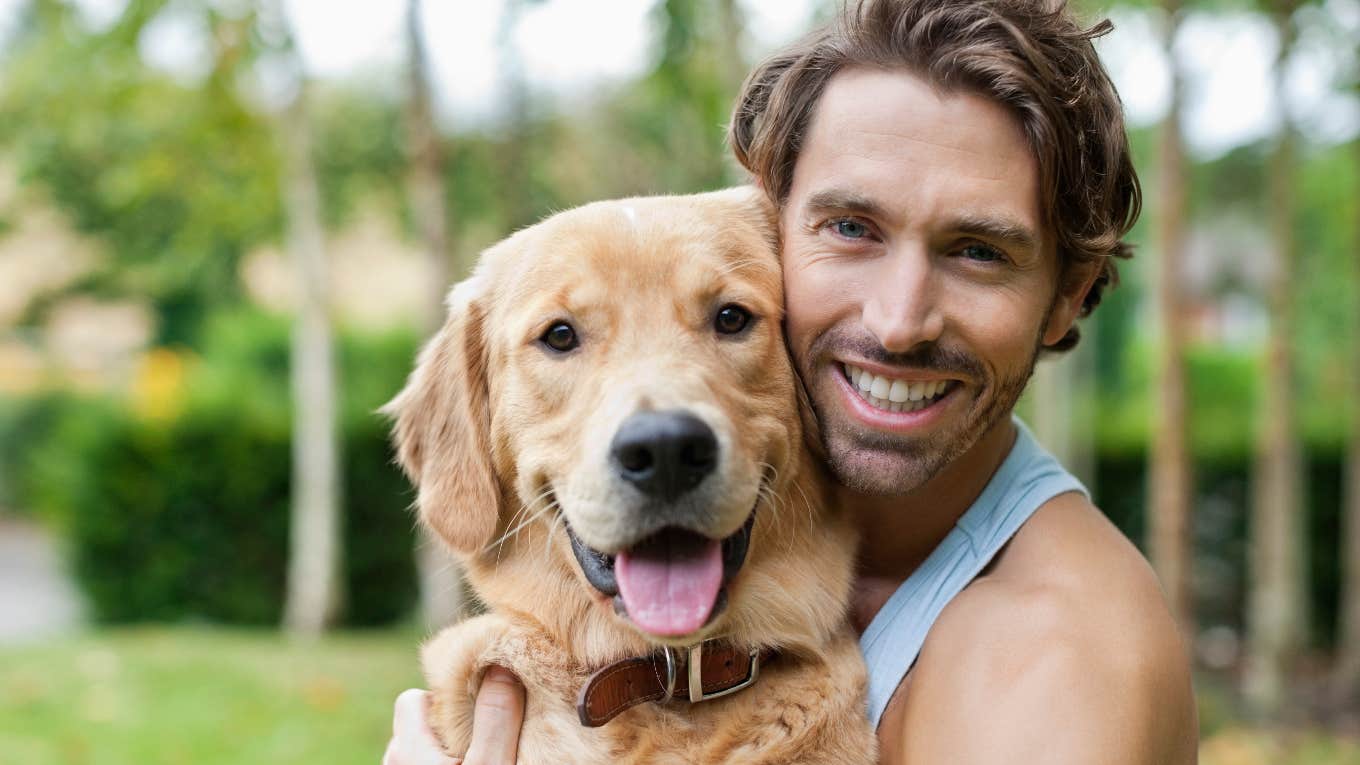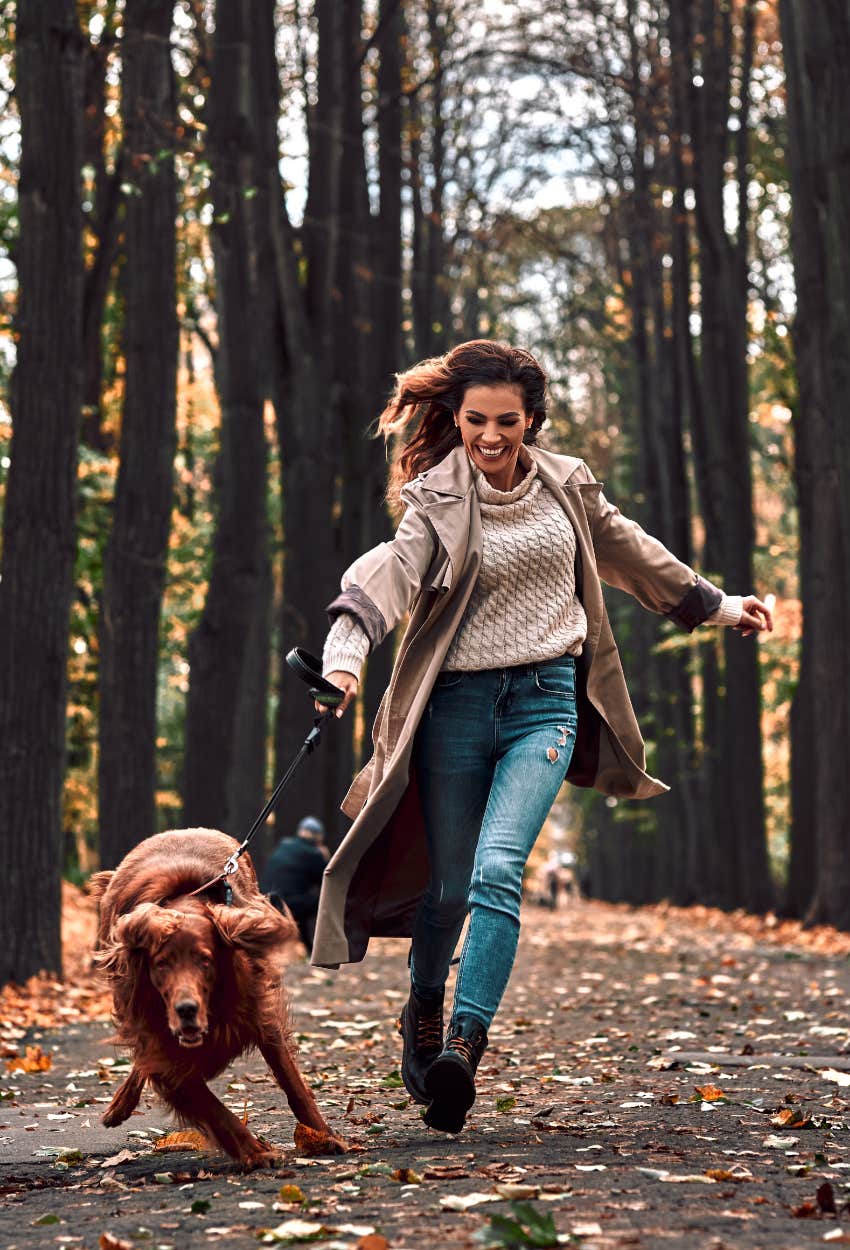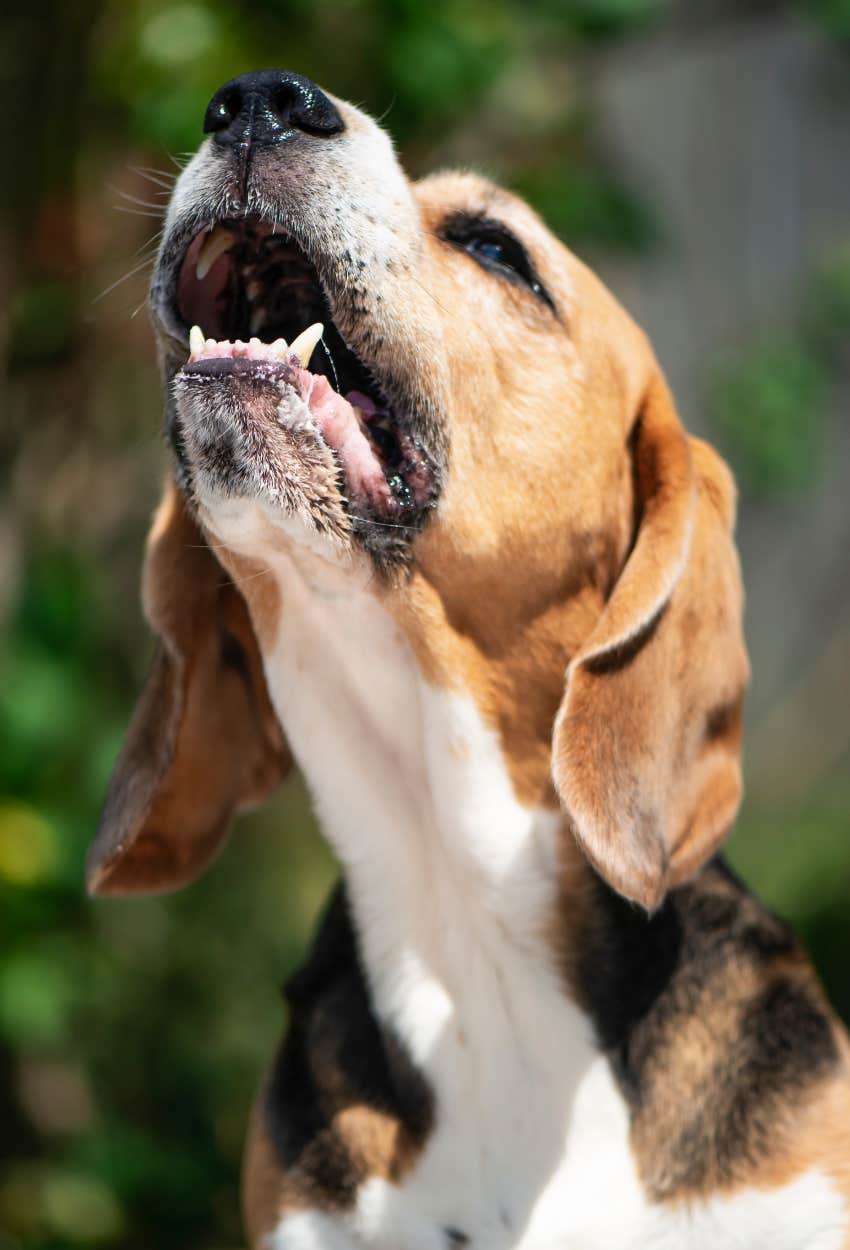6 Behaviors Dog Owners Think Are 'Bad' But Are Actually Just 'Dogs Being Dogs', According To An Animal Behaviorist
"Understanding their natural instincts leads to a stronger bond and a happier life."
 KOTOIMAGES | Shutterstock
KOTOIMAGES | Shutterstock As adorable, loyal, and loving as dogs are, they are still animals with natural instincts. Just because they live inside our homes and are spoiled rotten, does not mean they won't act like the animals they are.
In an Instagram post, California-based animal behaviorist Cari B. Cannon discussed some normal dog behaviors that owners often classify as bad. "Recognizing these actions as natural behaviors allows us to address the underlying needs rather than viewing them as misbehavior," Cannon explained. She encouraged owners to approach their pups with empathy and understanding when they display these less-than-favorable behaviors.
Here are 6 behaviors dog owners think are 'bad' but are actually just 'dogs being dogs':
1. Pulling on the leash
 Harbucks | Shutterstock
Harbucks | Shutterstock
When dogs get outside and are exposed to all sorts of new sights and smells, they get excited and may have no patience for an owner who wants to stroll at a leisurely gait. "After hours indoors, dogs are eager to explore at their own pace," Cannon explained. "This enthusiasm often leads to leash pulling."
Leash training can help with this. Dogs don't automatically know how to walk on a lead, and it's your job as their owner to teach them how to do so. According to the Animal Humane Society, all it takes is a collar or harness, leash, treats, and a bit of patience.
2. Digging
Dogs dig for all kinds of reasons — none of which are to annoy their owner. "The core of the behavior goes back to a dog’s wolf ancestors," animal behaviorist, dog trainer, and author Stephanie Gibeault explained. "In fact, that instinctual tendency is why some breeds were originally used to hunt animals in underground dens."
Dogs dig to pursue prey, cool down, search for food, and bury things they don't want stolen. Pregnant dogs dig as part of their denning instinct. They may also dig out of boredom or anxiety.
But just because it's natural doesn't mean you want your pup destroying your lawn. To curb this behavior, "ensure your dog is getting enough mental stimulation and physical exercise every day," Gibeault advised. If that doesn't work, embrace their instincts. "The easiest way is to give your dog a digging spot. A sandbox can work wonders in this way," she added.
3. Barking
 milatiger | Shutterstock
milatiger | Shutterstock
Expecting a dog not to bark is like expecting a human not to talk. "Barking serves as a dog's primary communication tool, signaling excitement, alertness, or a desire for attention," Cannon explained. "It's their way of expressing themselves."
Dogs also bark when they are bored, hungry, anxious, scared, or in pain. Sometimes, unwanted barking can be avoided simply by understanding what they are attempting to communicate and making appropriate adjustments.
4. Chewing
Once again, chewing is a natural instinct in dogs derived from their wolf ancestors. Dogs chew for myriad reasons, including boredom, stress, hunger, separation anxiety, and exploration. Young pups also chew to relieve pain while teething, while older dogs chew to strengthen their jaws and keep their teeth clean.
The best thing you can do as an owner is provide your pup with things they CAN chew on, like toys and bones, and hide valuable things that they cannot. "Providing appropriate chew toys can satisfy this natural urge," Cannon said.
5. Jumping on people
Usually, when dogs jump on people, it's simply because they are SO excited to see them. Perhaps you were at work all day, and they can't contain their happiness when you walk through the door. Or maybe they are overjoyed to meet someone new and make a friend. "Jumping is often a dog's enthusiastic greeting, reminiscent of how puppies act with their mothers," Cannon added.
While this behavior may be inconsequential, or even cute, with puppies and small dogs, when big dogs jump, it can quickly become a dangerous and annoying problem. According to the Humane World for Animals, the best way to fix this behavior is through management and training.
"Management means you must control the situation so your dog doesn't have the opportunity to jump up," they explained. This could mean putting your dog in a crate, a separate room, or on a leash before guests arrive. Then comes training — "Teach your dog that they receive no attention for jumping on you or anyone else. You can turn your back and only pet your dog when all four paws are on the floor," they advised, noting that consistency is key.
6. Ritualized aggression
"Dogs use ritualized aggression — like growling or baring their teeth — as a form of communication to prevent conflicts," Cannon said. "These signals are their way of saying 'I'm uncomfortable,' aiming to avoid escalation."
These behaviors aren't necessarily "bad" or even aggressive — more accurately, they are a warning. It is their way of signaling that they are uncomfortable or stressed, and it's your responsibility as a pet parent to mitigate the situation.
Don't write off your pup when they engage in these so-called bad behaviors. Remember, barking, chewing, and jumping all come with the territory of owning a dog. "By understanding their natural instincts," Cannon said, "we can turn frustration into compassion and build a deeper bond with our furry friends."
Audrey Jaber is a writer and associate editor with a bachelor's degree in journalism.

